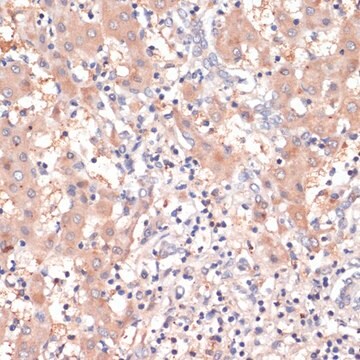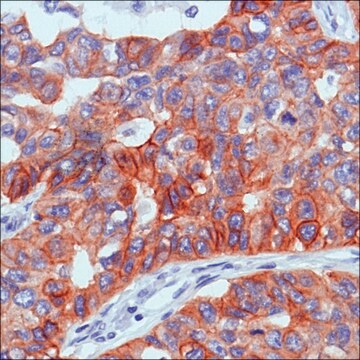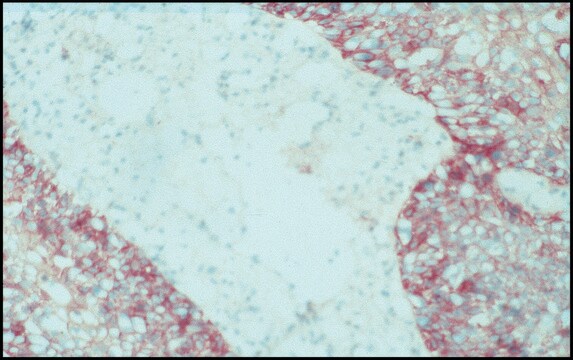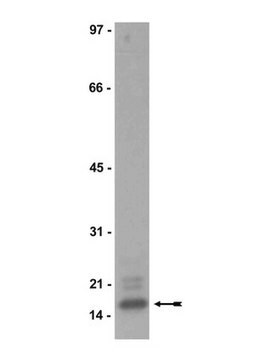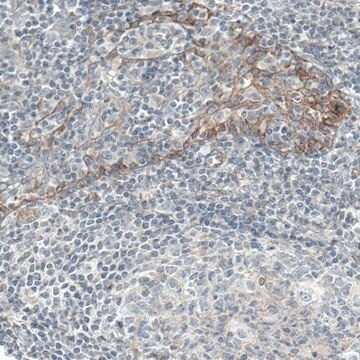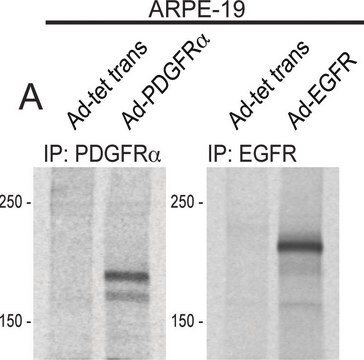05-1047
Anti-EGFR (cytoplasmic domain) Antibody, clone 8G6.2
clone 8G6.2, from mouse
Synonym(s):
Receptor tyrosine-protein kinase ErbB-1, avian erythroblastic leukemia viral (v-erb-b) oncogene
homolog, cell growth inhibiting protein 40, cell proliferation-inducing protein 61, epidermal growth factor receptor, epidermal growth factor recepto
About This Item
Recommended Products
biological source
mouse
Quality Level
antibody form
purified antibody
antibody product type
primary antibodies
clone
8G6.2, monoclonal
species reactivity
rat, mouse, human
technique(s)
immunocytochemistry: suitable
immunohistochemistry: suitable
immunoprecipitation (IP): suitable
western blot: 1:2,000 using A431 cell lysate (used to detect EGFR)
western blot: suitable
isotype
IgG1κ
NCBI accession no.
UniProt accession no.
shipped in
wet ice
target post-translational modification
unmodified
Gene Information
human ... EGFR(1956)
mouse ... Egfr(13649)
rat ... Egfr(24329)
General description
Specificity
Immunogen
Application
A431 cells were grown, fixed, permeablized, and stained with anti-EGFR, clone 8G6.2
Confocal Immunocytochemistry Analysis:
A431 cells were grown, fixed, permeablized, and stained with anti-EGFR, clone 8G6.2
Immunoprecipitation:
100 μg of A431 whole cell lysate was lysed in RIPA buffer and immunoprecipitated (IP) with 5 μg of Anti-EGFR, cytoplasmic domain, clone 8G6.2
Immunohistochemistry Analysis:
Tissue was stained with anti-EGFR, cytoplasmic domain, clone 8G6.2 at a 1:100 dilution and IHC-Select Detection with HRP-DAB reagents.
Quality
Western Blot Analysis:
1:2,000 dilution of this antibody was used to detect EGFR in A431 cell lysate.
Target description
Linkage
Physical form
Other Notes
Not finding the right product?
Try our Product Selector Tool.
recommended
Storage Class Code
12 - Non Combustible Liquids
WGK
WGK 1
Flash Point(F)
Not applicable
Flash Point(C)
Not applicable
Certificates of Analysis (COA)
Search for Certificates of Analysis (COA) by entering the products Lot/Batch Number. Lot and Batch Numbers can be found on a product’s label following the words ‘Lot’ or ‘Batch’.
Already Own This Product?
Find documentation for the products that you have recently purchased in the Document Library.
Our team of scientists has experience in all areas of research including Life Science, Material Science, Chemical Synthesis, Chromatography, Analytical and many others.
Contact Technical Service